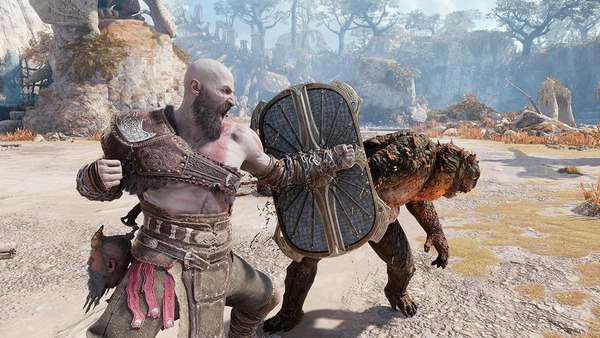Schedule I – Build Your Drug Empire in a Darkly Comedic Open‑World
Introduction
Schedule I, stylized as Schedule 1 on some platforms, is an early access open-world crime simulator by Australian indie studio TVGS (Tyler’s Video Game Studio). Released on March 24, 2025, for Windows via Steam, the game mixes business tycoon mechanics, tactical strategy, and dark comedy, placing players in the shoes of an aspiring drug lord operating out of Hyland Point. Quickly reaching the top of Steam’s charts with overwhelmingly positive reviews, Schedule I stands out for its immersive production minigames, emergent narrative style, and co‑op multiplayer—even teasing GTA‑like freedom with cartoonish absurdity.
1. Origins and Early Access Launch
Schedule I was released in early access on March 24, 2025. Its development was a solo endeavor by Tyler at TVGS, built using Unity. Early publicity came through TikTok and Twitch, catapulting it into virality within days. Critics praised its blend of satirical tone and cozy management gameplay, and it consistently held over 98% positive Steam ratings.
2. Setting and Story Beats
You begin as a small-time dealer living in the desert with your Uncle Nelson. A routine bust forces you to flee Hyland Point in an RV, which is promptly destroyed by rival gangsters. As Nelson's voice on the phone guides your next moves, you take up residence in a motel and begin to carve out your criminal enterprise.
The narrative—dark, comedic, and unexpectedly emotional—drives engagement beyond mere criminal acts.
3. Core Gameplay Loop
The game mobilizes a multi-layered gameplay loop:
-
Production: Grow marijuana, meth, and cocaine using minigame-based crafting—like balancing flame for meth or baking product till crystallization.
-
Distribution: Sell stock personally or hire dealers; use vehicles or skateboards to reach customers.
-
Expansion: Buy properties and staff—botanists, chemists, cleaners—to build automation.
This loop balances strategic decision-making with fun, hands-on tasks.
4. Minigame-Based Production System
Creating drugs isn’t cookie-cutter: each substance involves unique processes. For example, crafting meth requires combining pseudo, acid, and phosphorus in labware, heating for eight in-game hours, then baking for another six hours. These minigames bring depth and immersion to the simulation, turning routine production into engaging tasks.
5. Economic Simulation and Supply Chain
Schedule I’s economy responds to supply and demand. Prices shift based on availability and competition in districts. Automation via staff and distribution chains allows scaling, but carries ongoing costs—hire too much and you go bankrupt, too little and you stagnate.
6. Open World and Tactical Gameplay
Hyland Point is a stylized, gritty cityscape where you must dodge police checkpoints, evade random searches, and respond to curfews. A “wanted level” system activates if you're caught, forcing stealth or combat.
Cartel rivals also attack, requiring you to recruit enforcers and defend property.
7. Co-op and Multiplayer Features
Up to four players can cooperate in co-op multiplayer. Roles divide naturally: one player grows product, another handles logistics, another manages defense, etc. This mode amplifies strategy and role-playing possibilities.
8. Visual Style and Audio
Schedule I uses a stylized cartoonish visual design, contrasting grim themes with comic presentation. This allows exaggeration and humor—drugs that change hair color, random explosions—without overwhelming players with a grim aesthetic.
Audio complements the vibe with mock-business chatter, lab sounds, and comedic effects.
9. Community Response & Controversy
The game sparked comparisons to Drug Dealer Simulator, prompting an investigation into IP similarities. Despite this, most analysts noted that the minigame systems and presentation differ, legally keeping Schedule I clear.
With nearly half a million players at peak and steam reviews praising its polish and pacing, it's an unqualified success.
10. Roadmap and Ongoing Development
In early access, Schedule I is set to evolve over two years with monthly updates. Upcoming features include new drug types, expanded map, more businesses, enhanced automation, quality-of-life improvements, and possibly console support.
Pros and Cons
Pros
-
Innovative, hands-on minigame-driven drug production
-
Deep economic simulation with automation
-
Cooperative multiplayer roles enhance replay value
-
Stylish visuals and darkly comedic tone
-
High player ratings & rapid popularity
Cons
-
Sensitive subject matter may deter some players
-
Cartel/police AI can feel unpredictable or punishing
-
Repetition possible at full automation stage
-
Investigations into IP could signal future contention
Ratings Breakdown
-
Production Minigames: 9 / 10
-
Economic & Supply Chain Systems: 8.5 / 10
-
World Design & Strategy: 8 / 10
-
Visual/Audio Presentation: 8 / 10
-
Multiplayer & Co-Op: 8.5 / 10
-
Early Access Support: 8 / 10
Overall Score: 8.5 / 10
Conclusion
Schedule I is an unexpected hit that turns drug empire gameplay into a satirical yet strategic sandbox. Its clever minigame systems, combined with economic depth and cooperative multiplayer, make it more than just a crime simulator—it’s a surprisingly cozy management game within an illicit setting.
While it may court controversy, it’s already proven its worth with viral success, glowing user reviews, and ambitious roadmap plans.
If you’re looking for a darkly comedic, community-driven sandbox with both strategic management and hands-on gameplay, Schedule I is a standout indie to watch as it evolves toward its full release.





























